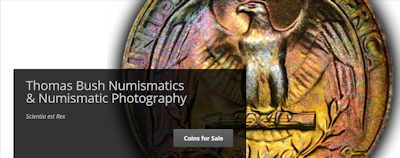Anyone have advice to grade or not to grade this Lincoln Cent?
 stiv22
Posts: 2 ✭
stiv22
Posts: 2 ✭

This cent is absolutely beautiful, my photo isn't as nice as it looks in person. If it were an MS67 I absolutely would get it graded but it isn't worth it if it's a 65 or 66 even. Any advice is appreciated. PS. THe tiny carbon spot is the only flaw I could find obverse or reverse, thanks.
Best Answers
-
 mannie gray
Posts: 7,259 ✭✭✭✭✭
mannie gray
Posts: 7,259 ✭✭✭✭✭
@stiv22 said:

This cent is absolutely beautiful, my photo isn't as nice as it looks in person. If it were an MS67 I absolutely would get it graded but it isn't worth it if it's a 65 or 66 even. Any advice is appreciated. PS. THe tiny carbon spot is the only flaw I could find obverse or reverse, thanks.I can't tell from your images of the coin is proof or a business strike.
If it is a proof, then no, it wouldn't be worthwhile grading it.
You would need a grade of PR69CAM to justify grading fees.
The spot would kill it, and also if it is proof, I don't see any contrast.If it's a business strike (non-proof, made for circulation) you would need in reality a 67+ to make the gamble worthwhile.
The spot would preclude that from happening.
1970-S is a date commonly found in high grades.
They are often quite stunning in appearance.
The graders know this, so you have that working against you as well.
In other words, the coin has to be a 67+/68 to be graded a 67 because they usually come so very nicely made.
I call this the "1881-S Morgan Dollar curse" but applied in this case to 1970-S Large Date Lincoln Cents.5 -
 TomB
Posts: 22,400 ✭✭✭✭✭
TomB
Posts: 22,400 ✭✭✭✭✭
I believe it's a proof and also believe it is worth quite a bit less than the fees required to get it certified. Enjoy the coin raw!
0

Answers
You would probably need a better pic and also one of the reverse.
don't. just spend it.
Thanks for the feedback, very much appreciated!
Looks like a proof to me, and even if a business strike (which I don't think it is), I don't see one getting a 67 or higher with that spot, no matter how otherwise perfect the coin may be.